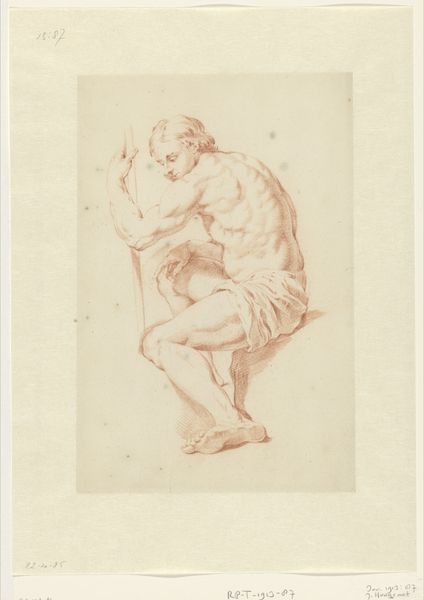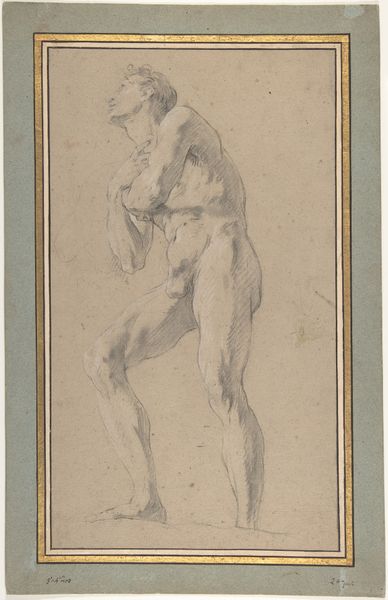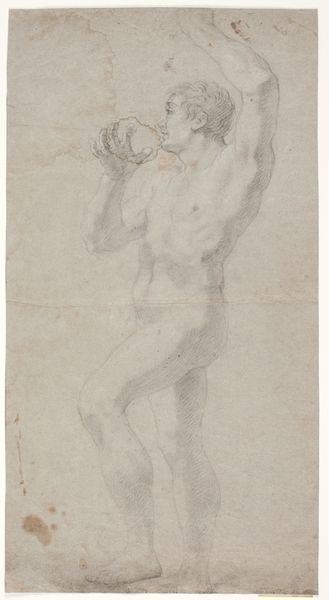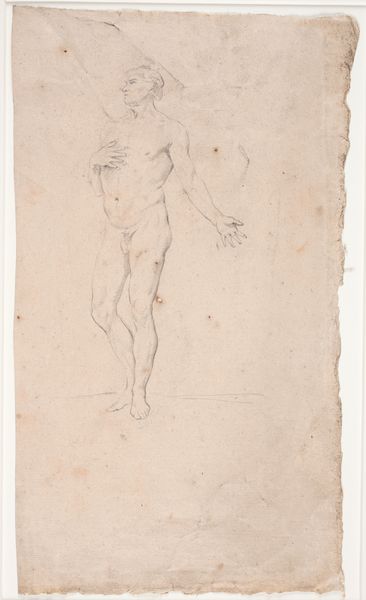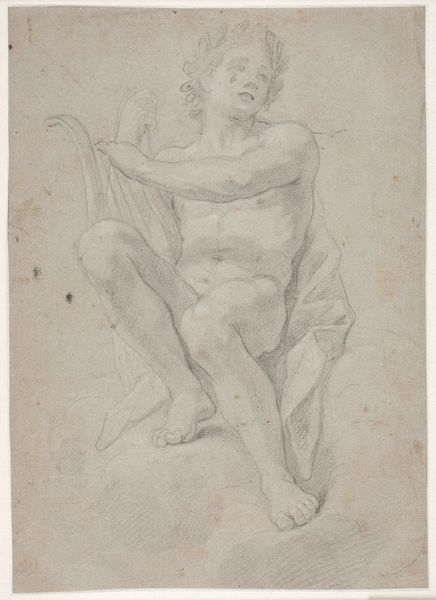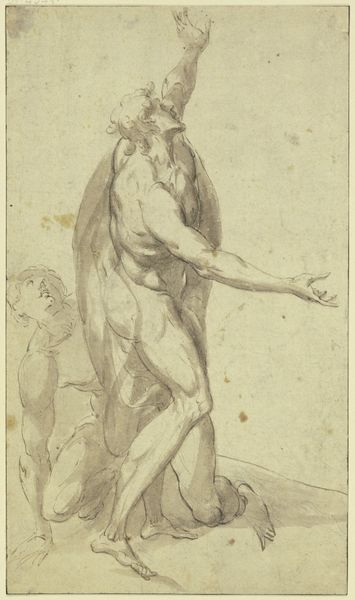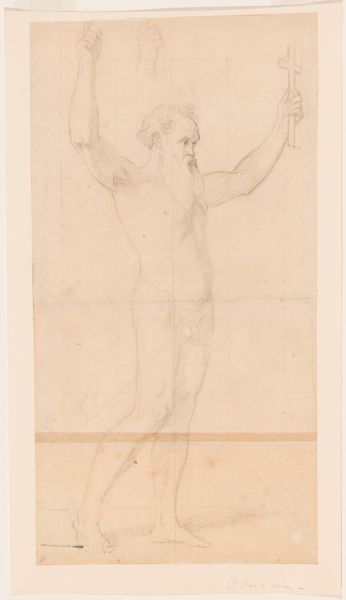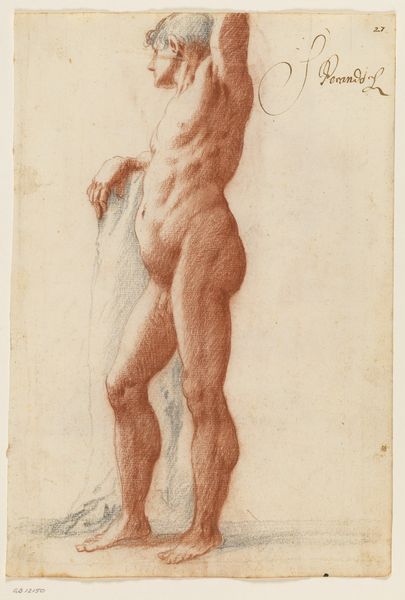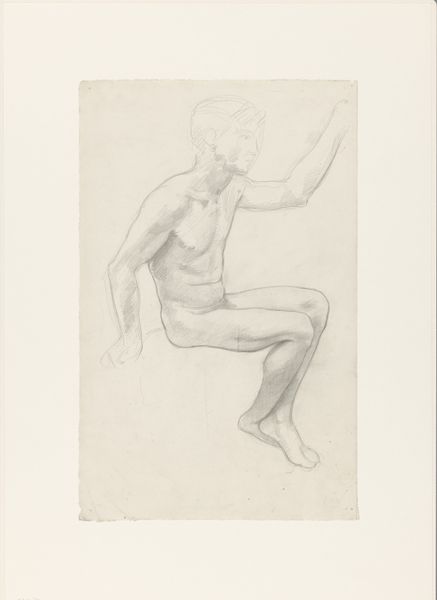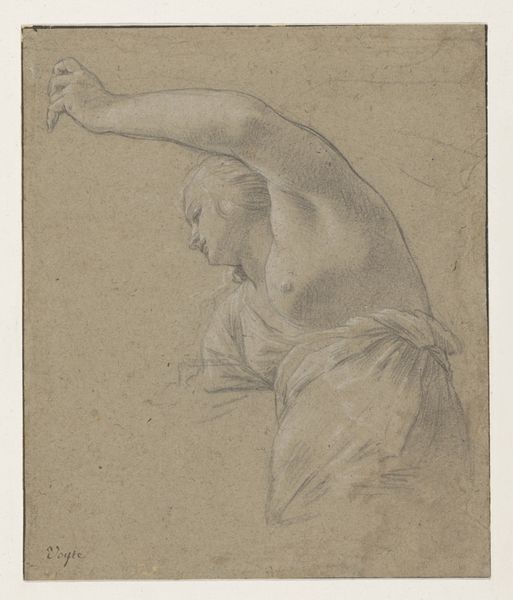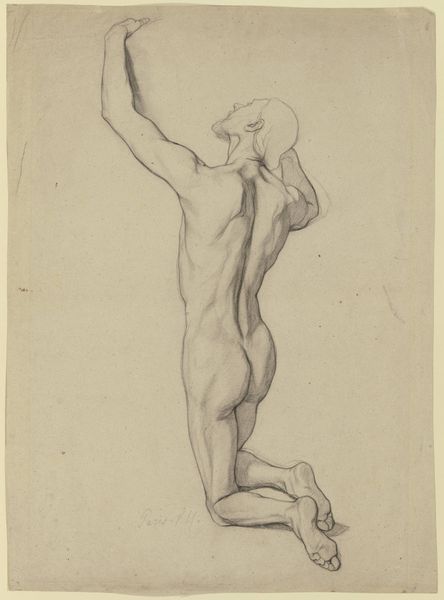
#
pencil drawn
#
toned paper
#
light pencil work
#
pencil sketch
#
personal sketchbook
#
pencil drawing
#
ink drawing experimentation
#
sketchbook drawing
#
pencil work
#
sketchbook art
Dimensions: height 187 mm, width 126 mm
Copyright: Rijks Museum: Open Domain
Editor: Here we have Annibale Carracci's "Study of a Man Wielding a Club," dating roughly between 1570 and 1609. It's a pencil drawing on toned paper and is currently held at the Rijksmuseum. There’s something so immediate about the pose, full of dynamic potential. What stands out to you? Curator: The sketch offers a compelling glimpse into the academic art world, or perhaps more aptly, its underpinnings. Carracci, influenced by classical ideals, employs the figure study as the bedrock for broader narrative compositions. Note how the Rijksmuseum has preserved the work as a cultural and historical artefact that now circulates on the art market. Does that influence your interpretation of it? Editor: Definitely. Knowing this was a study and now a display piece changes the narrative completely. It raises questions about the institutional and economic forces that shape what we deem valuable. It’s also thought-provoking how an artist’s personal work transitions into public commodity. Curator: Exactly. Consider how academies during Carracci’s time emphasized the mastery of anatomy. But more so, what would such drawings enable young, aspiring artists to learn? Were they able to freely develop techniques and creative expressions, and was it considered separate from commissioned artworks? Editor: Well, they learned from each other in informal academies, copying each other's best practice. That's amazing, it makes the idea of authorship so fluid! Now I see it not just as a snapshot of a man but as an illustration of an artist grappling with motion, form, and tradition. Curator: Precisely. So the transition from academic exercise to museum piece reveals much about the cultural value we ascribe to artistic skill, genius, and history. Editor: This has changed my understanding of the artwork – and artistic practices of the time. I now perceive Carracci's study less as a spontaneous creation and more as a reflection of structured learning within artistic circles and historical power structures. Thanks! Curator: My pleasure. Reflecting on these connections adds depth to our appreciation.
Comments
No comments
Be the first to comment and join the conversation on the ultimate creative platform.
